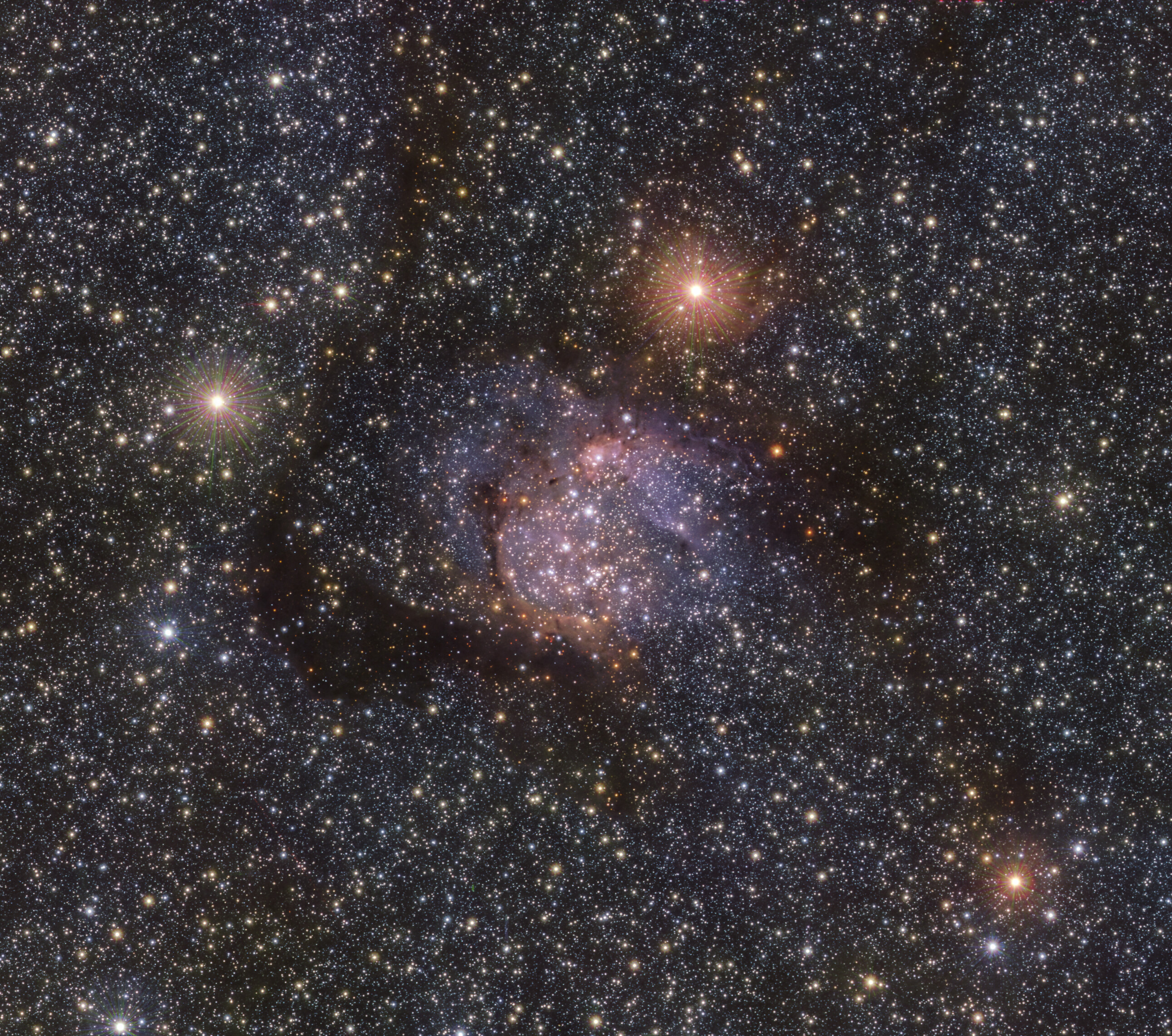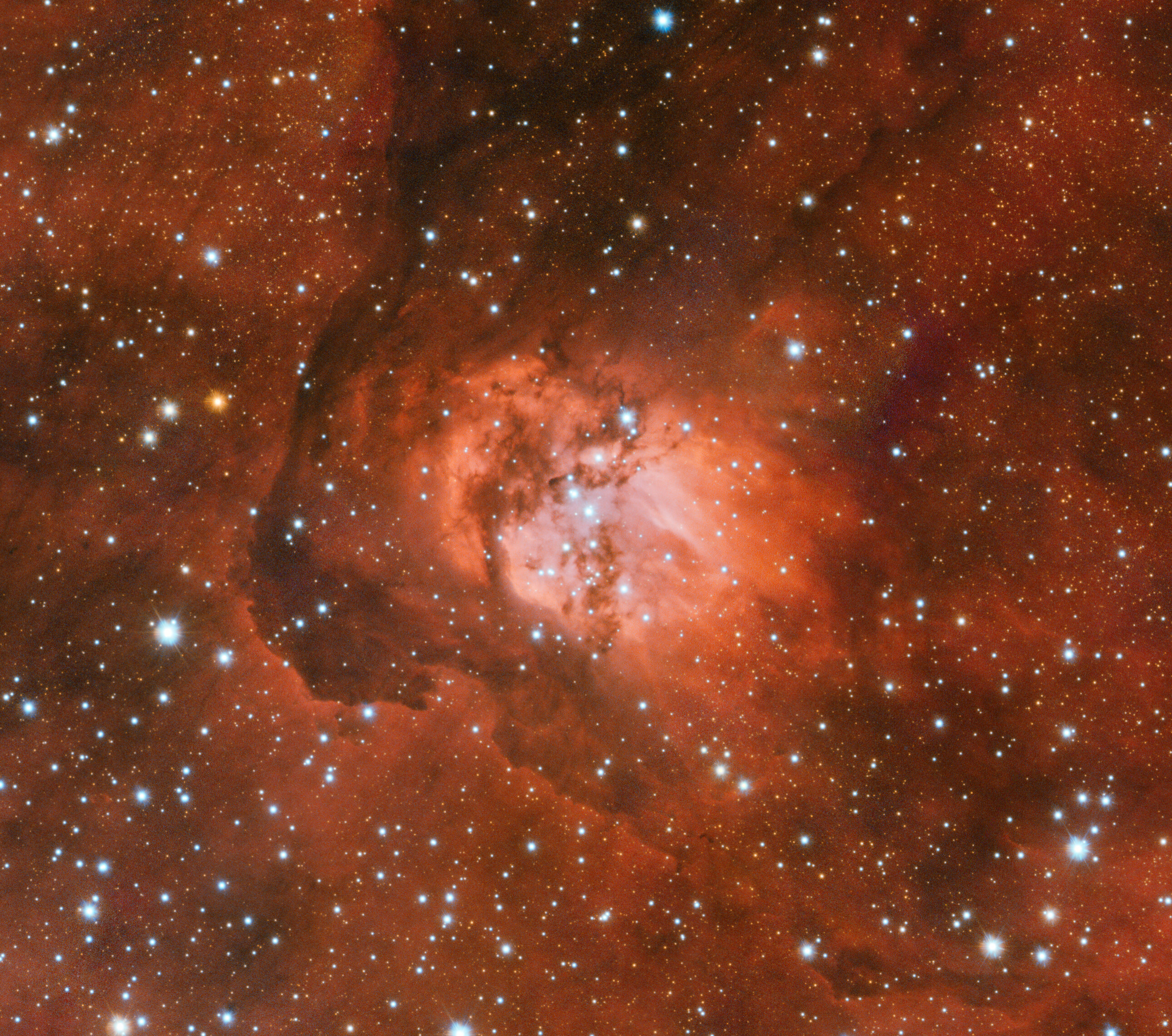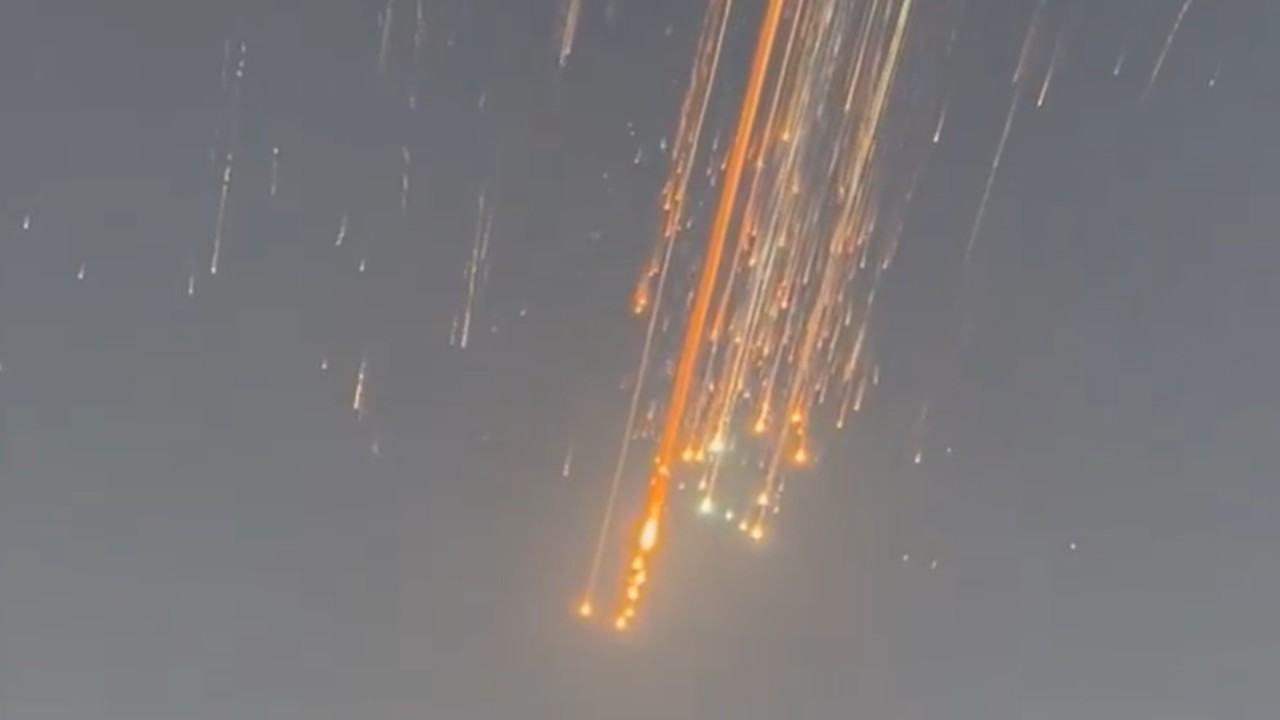Cosmic serpent slithers through stellar nursery in stunning new image
When seen in infrared, the faint orange glow of the Sh2–54 stellar nursery reveals stars hidden behind its clouds of star-birthing gas and dust.
A newly released infrared image of a distant stellar nursery has revealed stars usually hidden by the thick clouds of gas and dust that act as the blocking blocks of infant stars.
In the image of the stellar nursery, or nebula, Sharpless 54 (Sh2–54) appears as an orange glowing orb punctuation by bright stars. Sh2-54 is located around 6000 light-years from Earth in the constellation Serpens, which takes its name from its snake-like appearance.
Many of these stars would be hidden in visible light by the vast clouds of gas and dust from which stars are born because this star-forming matter is good at absorbing wavelengths of light in the electromagnetic spectrum our eyes have evolved to see.
Related: Star blasted stellar nursery in 'Orion's sword' seen in detail
To capture these obscured stars and the hidden details of this spectacular nebula in intricate detail astronomers used the infrared observing power of the Visible and Infrared Survey Telescope for Astronomy (VISTA) based at European Southern Observatory's (ESO's) Paranal Observatory located in Chile. Infrared light is useful in the investigation of nebulas as electromagnetic radiation in these wavelengths slips through thick clouds of gas and dust almost unimpeded.
The ESO team employed VISTA's sensitive 67-million-pixel camera to create this image of this stellar nursery taken as part of the VISTA Variables in the Via Láctea eXtended survey (VVVX). This multi-year project repeatedly observes a large portion of the Milky Way at infrared wavelengths, revealing details of stellar evolution that observations in visible light no matter how powerful may miss. That includes the hidden details of nebulas.
Vast reservoirs of dust and gas, mostly hydrogen and helium, nebulas form when gravity causes this material to "clump" together. As these clumps increase in size and mass their gravitation influence grows too.
Breaking space news, the latest updates on rocket launches, skywatching events and more!
This leads to the creation of regions of high-density clumps or "molecular clouds" that eventually become so massive they collapse under their own gravity forming the very beginnings of a star, a protostar.
These protostars may look like stars but they are still not hot enough to perform nuclear fusion at their cores, the process which transforms hydrogen to helium and generates the vast majority of a star's energy output. Instead, the luminosity of protostars is simply derived from the heating of the protostar material as it continues to collapse under the influence of its own gravity.
At this time, the protostar is still gathering material from the molecular cloud that birthed it to grow, and when its core reaches a temperature of around 18 million degrees Fahrenheit (around 10 million degrees Celsius or 10 million Kelvin) hydrogen to helium fusion can begin.
This means the protostar becomes a young main-sequence star often surrounded by what remains of the molecular cloud now flattened into a disc and capable of eventually coalescing and forming planets.
Sh2–54 itself contains a wealth of protostars and young stars that cause this stellar nursery to glow brighter than its surrounding region and the nearby open cluster NGC 6604. Found some 5,500 light-years away from Earth, NGC 6604 is also host to many hot, young, white stars.
Follow us on Twitter @Spacedotcom or on Facebook.

Robert Lea is a science journalist in the U.K. whose articles have been published in Physics World, New Scientist, Astronomy Magazine, All About Space, Newsweek and ZME Science. He also writes about science communication for Elsevier and the European Journal of Physics. Rob holds a bachelor of science degree in physics and astronomy from the U.K.’s Open University. Follow him on Twitter @sciencef1rst.


